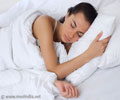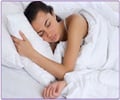
‘Mandibular movements monitoring represents a powerful tool for assessing the efficacy of oral appliance treatment for sleep apnea.’
Tweet it Now
MM during sleep are accurate reporters for increased respiratory effort and micro arousals found in people with sleep apnea. In this sleep study, 56 patients with obstructive sleep apnea (OSA) were fitted with a custom mandibular advancement splint (OAT) and had their midsagittal mandibular movement tracked. Patients were evaluated at the end of the titration procedure. During the titration procedure different degrees of advancement are trialed up and down to find the single best amount to control apnea events for that patient. "The novelty of the study related to tracking sleep MM in order to assess oral appliance therapy effectiveness," explained lead investigator Jean-Benoit Martinot, MD, Sleep Laboratory, CHU UCL Namur Site Sainte-Elisabeth, Namur, Belgium.
Investigators found that by the end of titration, all indications of OSA decreased compared with baseline. Overall, patients showed a reduction of vertical respiratory MM and sleep respiratory effort, as well as a dramatic decrease in obstructive hypopnea. Scores from the apnea-hypopnea index and oxygen desaturation index also dropped.
"Using MM measurements in the oral appliance titration procedure has the potential to optimize the benefit/risk ratio of oral appliances," said Dr. Martinot. "There is a high interindividual variability in response to the oral appliances, and it is difficult to predict the range of responses without proper measurement."
Researchers also found that MM monitoring helped to reveal the presence of central apneas. They found in a subgroup of subjects a decrease in respiratory effort, but no improvement or an increase in sharp and sudden MM of high amplitude, which indicates persistent sleep fragmentation. This is highly suggestive of emergent central apneas and may shed light on a possible predictor for poor response to OAT.
Advertisement
Source-Eurekalert















